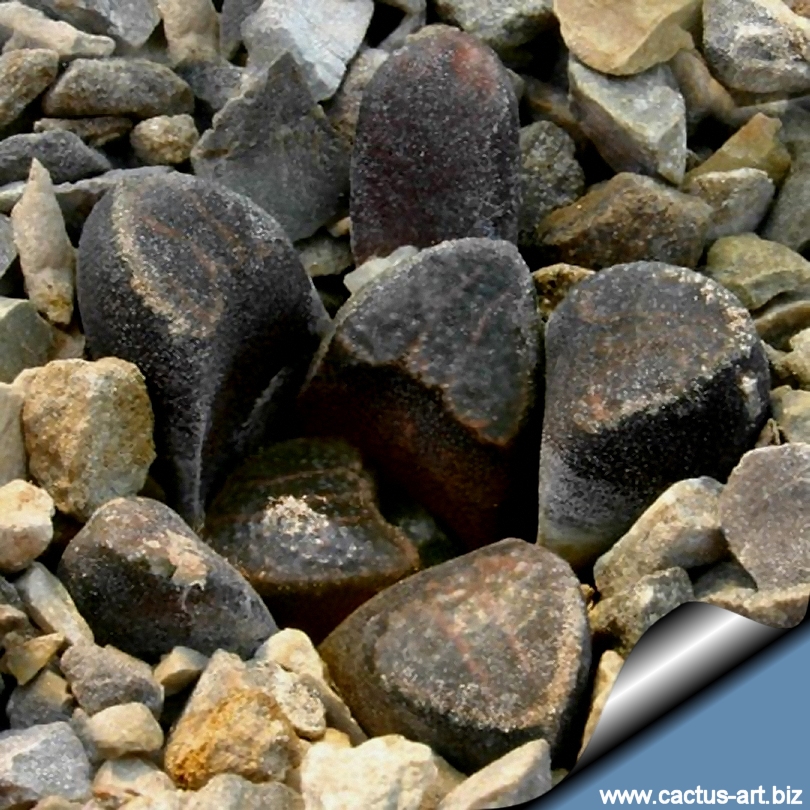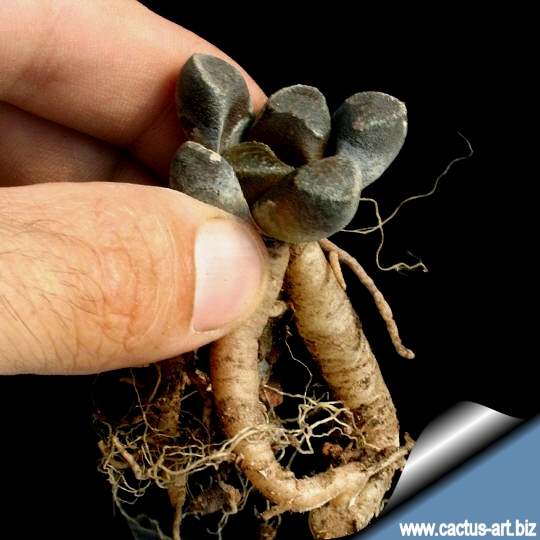|
|
|

Haworthia bruynsii (Steytlerville Springbokvlakte)
Dwarf slow growing species. Very nice. |
|
|
Description: Plants are almost always solitary, slow growing,
tiny, and in the wild they are mostly sunken into the ground. It has a
somewhat flat growth habit and can vary in color from grayish blue-green
to green.
Rosette: Stemless 4-6 cm in diameter, with only 5-10 leaves when
fully grown .
Leaves: Brown, with a flat retuse leaf-end, translucent, bluntly
triangled. Opaque and slightly scabrid with small raised tubercles.
Flowers: Slender, tube obcapitate, with tepales fused, tip
revolute. Born on a simple, slender, sparsely flowered inflorescence.
This charming species looks like a miniature form of H. retusa
but it belongs to subgenus Hexangulares (because of the flower -
peduncle is long and wiry and the florets are six-sided at the base) and
seems strictly related with H. sordida.
Cultivation: In cultivation it belongs to more difficult and
slow-growing species. (very prone to rot) Needs regular water in summer
keep dry in winter.
Propagation: This species does not offset often so (usually) must
be done by seeds, or eventually by offsets if available.
Photo of conspecific taxa, varieties, forms and
cultivars of Haworthia bruynsii.
|
|
Advertising
|
|
|
|
Family: Asphodelaceae
(Aloacee - Asphodelaceae, Liliaceae)
|
|
Scientific name:
Haworthia bruynsii
M.B. Bayer
In: JSAB 47:789,1981
Origin: South Africa, Eastern Cape province, Little
karoo, South-east of Steytlerville (known localities: SE. Steytlerville,
Langveld, E. Springbokvlakte, SE. Springbokvlakte, Kleinpoort)
Habitat: H. bruynsii grows sunken in the ground usually
well hidden under the bushes, with it's light-transmitting leaves
usually coated with a fine covering of dust.
Conservation status: Listed in
CITES appendix 2.
Etymology: It is named after Dr. Peter, V. Bruyns south African
mathematician and succulent plant botanist.
|
|
Synonyms:
- Haworthia retusa var. bruynsii (M.B. Bayer) Halda
1997
|
|
|
|

Roots

 |
|